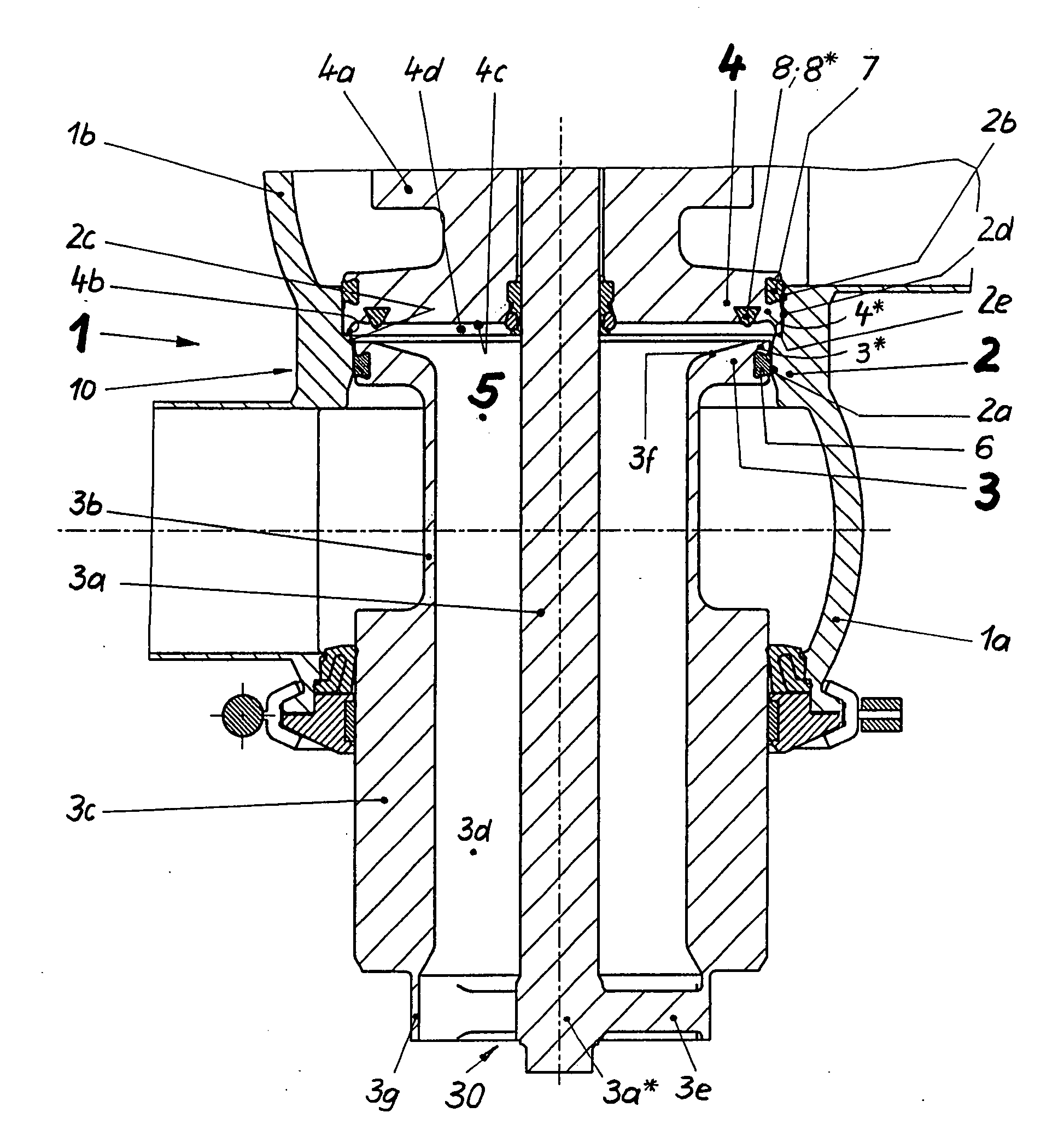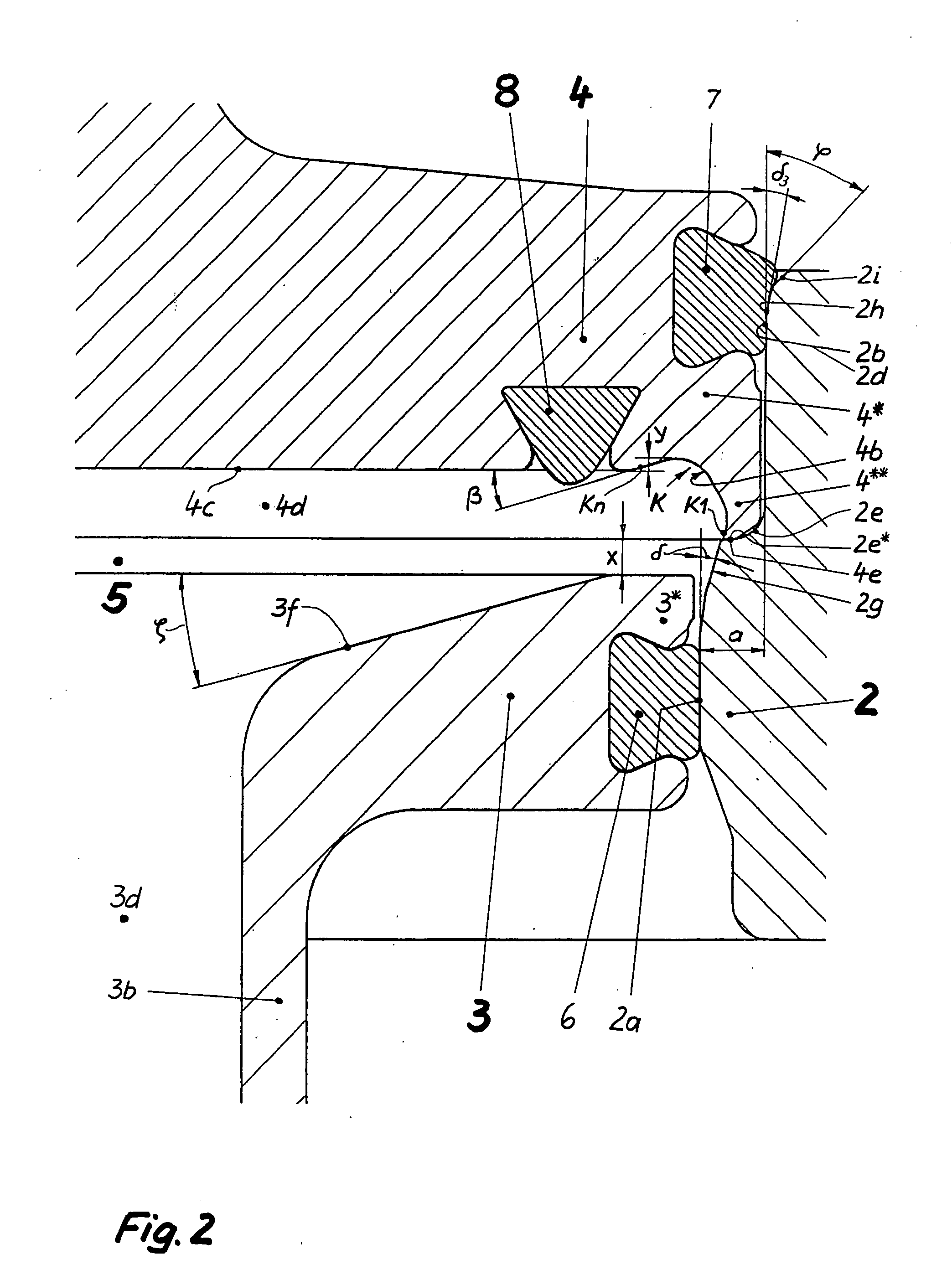Double seat valve
- Summary
- Abstract
- Description
- Claims
- Application Information
AI Technical Summary
Benefits of technology
Problems solved by technology
Method used
Image
Examples
Embodiment Construction
[0054]The double seat valve 1 (FIG. 1) according to the invention consists in a first embodiment substantially of the valve housing 10 comprising a first and a second valve housing part 1a and 1b, respectively, the two closing elements 3 and 4 moved independently from each other with the associated shifting rods 3a and 4a, respectively, and a seat ring 2, which creates a connection between the valve housing parts 1a, 1b through a connecting opening 2c on the inside.
[0055]The first closing element 3 formed as a slide piston (active closing element) is received in sealing manner in the closed position of the double seat valve 1 in the first seat 2a formed by the connecting opening, which is configured as cylindrical seat. For this purpose, a first seal 6 is provided in the slide piston 3, which co-operates with the first seat 2a exclusively through radial bias (radial seal with sliding engagement). The second closing element 4 also formed as a slide piston co-operates with a second se...
PUM
 Login to View More
Login to View More Abstract
Description
Claims
Application Information
 Login to View More
Login to View More - R&D
- Intellectual Property
- Life Sciences
- Materials
- Tech Scout
- Unparalleled Data Quality
- Higher Quality Content
- 60% Fewer Hallucinations
Browse by: Latest US Patents, China's latest patents, Technical Efficacy Thesaurus, Application Domain, Technology Topic, Popular Technical Reports.
© 2025 PatSnap. All rights reserved.Legal|Privacy policy|Modern Slavery Act Transparency Statement|Sitemap|About US| Contact US: help@patsnap.com



